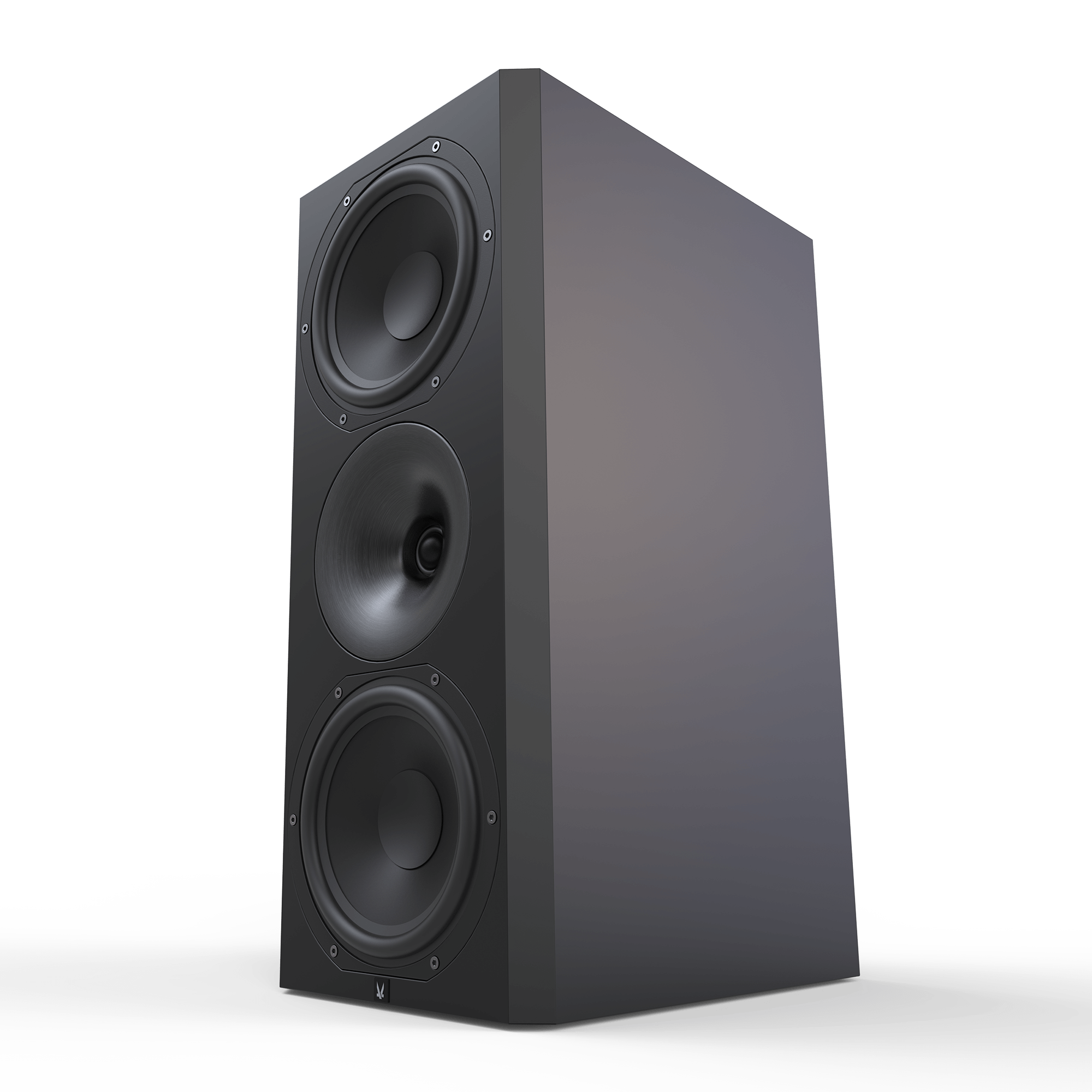AWESOME AND EXCITING
We’ve gotten some feedback that we have not praised the Arendal Sound Towers enough, which we gave our “Highly recommended” award earlier this year, whilst others think we were overly positive, because these are speakers made in Norway. It is of course possible to describe The Tower in an even more panegyric way, comparing it with good wines, well-matured hams or other happy experiences. Had we done that, the latter group would surely become even more critical.
Arendal Sound speakers are not the best, they’re not the world’s most affordable and they do not give automatically sonic nirvana wherever they are placed. And maybe they are not so-called hi-end either. Our view regarding the Tower is that they play fabulous in terms of their price. Large, powerful and detailed. A combination of qualities we know many are looking for. We therefore looked forward to bring in the Arendal Sound Monitor. Can they compete with the Tower, and if so in what way?
SOLID BUILD
The Monitors are large and voluminous for a speaker that should be placed on stands. Personally, I think they are too large, as they take up as much space as the Tower, but on stands. But they are a more affordable and require less amp power than what is needed for Tower.
The drivers used are two paper based 8” bass/mid-range which Arendal Sound have developed themselves, and then there is a 28mm tweeter sitting in a waveguide. The goal with the waveguide is a smoother and controlled spread across the frequency range which makes the off-axis listening sound stage, as close as the “sweet spot” as possible. Focus, perspective and spaciousness is optimal in the “sweet spot” with the same distance to both speakers.
Crossovers used in Arendal Sound speakers are large and beefy, and perhaps even the most beefiest I’ve seen in the price range. The terminals on the back is also a class you do not normally see. The impedance curve is quite nice, although not as kind as Tower. It never drops below 4 Ohms. The construction is made of HDF (more dense and better damped material than MDF) and the finish is in black or white, and you can choose between matte and glossy varnish.
ROOM MATCHING AND SETUP
Arendal Sound Monitor rolls slightly off below 40Hz but as with all other speakers they perform below the -3dB point. In Monitor’s case you can even decide how the sound should, by closing one or two bass ports on its back. With both ports closed the Monitor behave as a closed system with a flatter frequency response and not as steep roll off as in vented option. And then of course the ability to close only one port. There is no magic formula and we advise everyone to play around a little with the options that exist. Which effect you get is dependent on the room, location and equipment you are using. For a large room with a good amplifier in a system without a subwoofer, they should be run with all ports open. In smaller rooms, particularly in rooms where the bass is perceived as somewhat uncontrolled or lacks tightness, it is recommended with one or two plugs installed. Most standard rooms will provide an additional reinforcement in the bass below 40Hz. Depending on location and where you sit you will easily get 5-6dB extra, and in some cases as much as 10-12dB. At worst, even with Monitor, it will simply add too much bass. If there is too much bass, it loses its tightness and definition.
Optimally adjusted and positioned, the Monitor is incredibly tight, precise and they have an impressively quick bass which hammers the listener. In fact, they are even more tight and precise than the Tower in my living room.
THE SOUND
From approximately 50-60Hz and upwards there is no real difference between Monitor and the floor standing Tower. Midrange is open and dynamic, and you perceive it as very honest and direct. The tweeter is also detailed and well resolved, and is well integrated to the midrange. For some, this is probably a surprise. These speakers imply that they are designed to play loud and violently, but they are capable to play gently, whisper if necessary and still be usable for acoustical music. The Monitor serves it with a credibility and naturalness that impresses highly. For this to be possible, the speakers have to have no obvious colouration, distortion or resonances. Where other “power speakers” are somewhat hollow with nasal sound in parts of the frequency range, The Monitors are clean as a freshly washed window panes in the spring.
The Monitors are also capable of handling volume that impresses. It does not compress dynamics, even pushed to its outermost limits and to say it this way: It’s not an exercise you should do anybody present, other than yourself. The speakers plays roaring loud and with such depth, that you wonder if you magically got a subwoofer with the purchase. Nevertheless, it’s not the perfect full range speaker and does not go down to the very deepest bass. If you don’t buy The Towers (which we would have), the need for a subwoofer is required to get the feeling of size, depth, and authority a floor standing speaker would give. A good option in this respect is Arendal Sound 1723 Subwoofer 1. Get two for a speaker system that is beyond most other you can buy in the same general price range.
I play Ingvild Koksvik (you should too!). It’s so beautifully made with production so yummy, that you would think that top Hi-End speakers are needed to get the full potential from it. But, sound Nirvana can be applicable with the Monitors as well. Its surprising, but not quite unexpected after we reviewed the Towers. And it’s always tempting to play Infected Mushroom, which I have used a lot more than I thought to judge the speakers. “Becoming insane” kicks you in the chest, the mid-bass hammers with rare authority and the room is starting to move. Note taken; its with a certain enthusiasm.
CONCLUSION
Arendal Sound Monitor is an incredibly impressive speaker, but we’re a little unsure of what needs it is designed to cover. Is it to be placed in a 2.1 system or a home theater system? In your living room, The Monitors becomes as big and obvious as the Tower, or another floor-standing speaker.
I got the opportunity to try the Monitor as a 2.1 system (see review of Arendal Subwoofer 1 in another article), and things immediately fall in place. With the proper alignment and placement most people will find this combination to be better than a pair of Tower in a regular room. Not that the Towers are lesser speaker, only that they demand larger room to play optimal.
It’s impossible to not give these speakers a solid 5 star rating, the given price tag, but we need to mention that it’s not for everyone or fits in all rooms.
WE LIKE
- Impressive precision.
- SPL.
- Great details and refinement.
- Price.
WE DO NOT LIKE
STEREO+ OPINION
With the Monitor, Arendal Sound are showing that the success was not luck or coincidences with the Tower. The Monitor plays incredible for the price!



